While large fish fail to thrive at Southern California Edison’s artificial reef off the coast of San Clemente, California, mitigation mandated by the California Coastal Commission to repair destroyed kelp beds at their San Onofre Nuclear Plant (called SONGS), a wider marine mammal crisis is ongoing. Could radiation released from SONGS be the culprit in both cases?
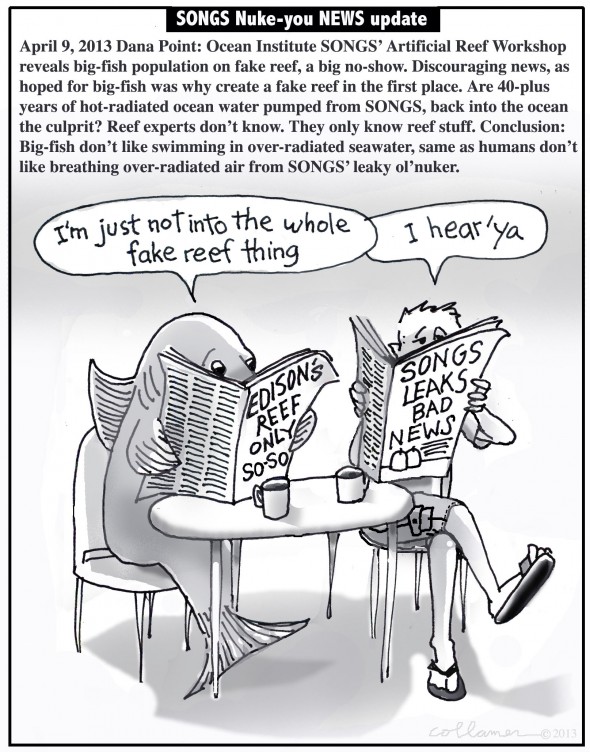
SONGS / Wheeler North Reef Mitigation Project
I know exactly where you were NOT, weeks back at Dana Point’s Ocean Institute, getting debriefed by seaweed experts from UC Santa Barbara (growing kelp on artificial reef material: Catalina boulders, 100 or so feet down, off San Clemente). Labeled Wheeler North Reef, it should be named ED’s Reef aka Edison: owner-operator of SONGS nuke plant.
The nuclear reason for re-reefing off San Clemente’s beach, mandated by the California Coastal Commission, is to mitigate damage done over 40-plus years of sucking and flushing, sucking and flushing, sucking and flushing billions (with a B) gallons of hot radioactive seawater, 24-7-365, in and out of 18-ft diameter underwater pipes, to cool the radioactive nuttiness inside SONGS (when it’s running — SONGS has been switched off for over a year due to leaks / radioactive tube leaks, ouch).
In non scientific speak: SONGS screwed up nature’s way to a healthy ocean. To make good, Edison built their reef / ED’s Reef. A 156-acre artificial creation overseen by UCSB researchers, to grow kelp, to attract fish back here. How that’s working, was why the reef info get-together weeks ago you probably didn’t attend.
Big Fish, A Big No-Show
ED’s Reef (’09 to now) success, and or failure to attract big happy fish here, to cavort among towering, reengineered kelp has kinda, sorta, almost worked. Except for “big-fish” wish part. Big prize fish, fisherman prefer to catch, hasn’t worked. Build it, and they didn’t come. But the kelp forest part, that worked. And, there’s a reef full of urchins crawling all over the transplanted Catalina reef boulders.
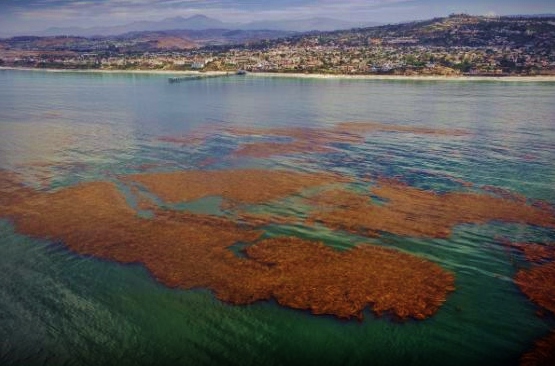

ED’s Reef Score Card Today:
1) Kelp good
2) Urchins good
3) Tiny fish okay
4) Big fish nope
Which is too bad, because attracting big fish was the big hope in ’09, and why ED’s Reef is down there sans big fish. Does that mean ED’s Reef failed at Job-1? Well, not so fast. Apparently, reef-re-creation is like golf. Making reefs, comes with a huge built-in handicap system. Like golf: the sport only 125 people on the planet actually play, while the rest of us duffers cheat via our golf-handicaps. Cheating made legal!
Same is true when man-makes…reef.
SONGS Reef Handicap, A Golfer’s Cheat Sheet
During our Night at the Institute, the PhD’s in charge of ED’s Reef admitted (just like golfers), they’d penciled in a hefty handicap system starting out (obviously the big fish, didn’t get that memo). ED’s Reef success or failure-rate (’09 to now) is based on comparisons to other bottom-feeder, underachieving, real-reef low-performers.
Meaning: finishing last, is good enough. All ED’s Reef need do is preform as bad as “real” below average reefs perform and that’s good enough. Just like golf. With its massive reef-handicap, ED’s Reef is not a total dud. It fosters urchins and tall kelp, while failing to attract big fish.
The obvious question was asked, “Does SONGS’ radiated ocean discharge affect the reef’s negative performance?”
The reef-PhD’s said they only know reef stuff. Not radioactive stuff. But it doesn’t take a PhD to know Edison is in a world of hurt with SONGS, on land and, at sea. Its manmade reef, not big-fish-friendly. Things ain’t glowing swimmingly below, even with ED’s Reef hefty-handicap system faking Big ED’s grand illusion, that everything is A-OK at SONGS.
Unless you’re a big fish. Or a human living in Southern California.
And then there’s this…
West Coast Sea Lion Sickness = Nuclear Power Radiation?
By Yoichi Shimatsu in Rense.com
Beached in front of the San Onofre nuclear power plant, the carcass of a California sea lion was remarkable, for being an adult specimen. So far, throughout the six-week crisis for marine mammals along the Southern California coastline, all of the 2,000-plus sea lions, elephant seals and harbor seals suffering severe malnutrition have been pups deprived of breast milk from their emaciated or missing mothers.
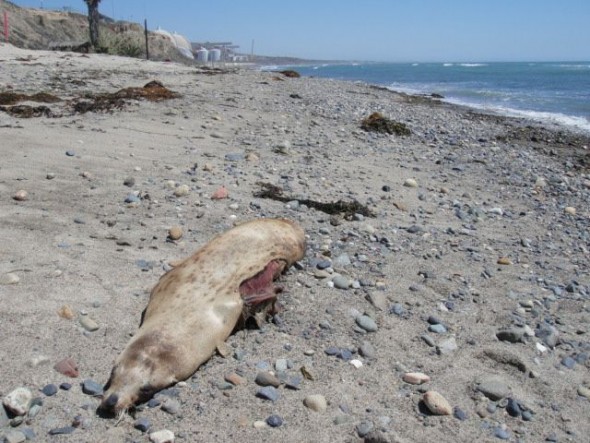

Veterinarians and volunteers at marine mammal rescue centers from San Pedro to Laguna Beach (roughly between Los Angeles and San Diego) have been puzzled by this inexplicable pup crisis. The assumption is that of mass starvation being caused by a shortage of near-shore fish, which forced the mothers to venture far out to sea. While there has been a long-term trend of population decline among smaller piscine species and mollusks, a sudden drastic drop in sardine numbers this spring is unlikely, considering the large numbers of dolphins seen offshore in pursuit of schools of fish.
The feed scarcity theory is also inconsistent with the daily tally posted by fishermen at docks along the Southern California coast. Game fish that predate on mollusks and smaller fishes are still being caught in large numbers with rod and reel. Therefore the crisis faced by shore-based marine mammals must have a different cause.
Radioactive Sea Lions off SanO, Why?
A quick scan with a dosimeter revealed that the sea lion was radioactive. More careful measurements disclosed a shocking 0.48 microsieverts in the heart and liver region. The second most affected area was its rear flippers, probably due to repeated contact with fecal excretions. The nose and mouth were a bit less contaminated.
There are two known sources of radioactive contamination along the West Coast: the North Pacific Current conveying coolant dumped from the melted-down Fukushima TEPCO facility; and the Columbia River containing wastewater from the Hanford nuclear weapons plant in Washington State. Yet, here, the high radioactive levels found in a sea lion point to a third nuclear culprit, the Southern California Edison at San Onofre.
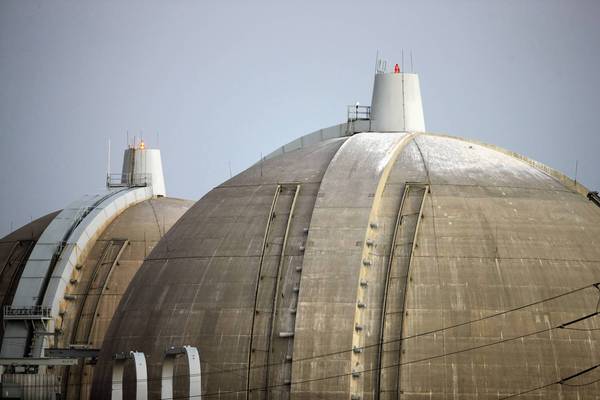

The Nuclear Regulatory Commission (NRC) clearly has shown that it favors the industry over public safety. How else can you interpret their recent declaration that San Onofre poses “No Significant Hazard” if it is allowed to operate at 70% power, but can’t run safely at 100%?
The NRC has recently opened the door for Edison to experiment with restarting a defective nuclear reactor before having to undergo any further scrutiny from a license amendment hearing. If we, the people, do not intervene on our own behalf, Edison could begin their 5 month nuclear testing as early as June. — Gary Headrick, San Clemente Green
Electricity generation at SCE San Onofre ceased in January 2012 due to leaks in its steam generator, reportedly without any release of radioactive isotopes. More than a year later, Edison officials announced a plan to seek regulatory approval for a restart of Reactor 2. At the very same moment in early March, rescue centers from San Pedro to Laguna Beach were overwhelmed with starving sea lion pups, which soon totaled more than 2,000 cases.
The question thus arises: Did Edison officials secretly approve the hosing down of the San Onofre plant in preparation for inspection by the Nuclear Regulatory Commission?
To read the entire article, CLICK HERE.
Okay, maybe this is no smoking gun, but let us not forget the ongoing nuclear releases into the Pacific Ocean from Fukushima as well. Is there a scientist in the house not paid by the nuclear industry?




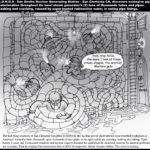
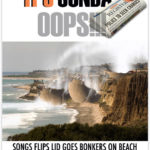






Placing boulders on the bottom does not create a fake reef, it creates a reef, there is nothing fake there. The big fish will show up.
Darrel is right, rocks are rocks. The reef is only a few years old, give it some time before you shit all over the idea.
Killer one